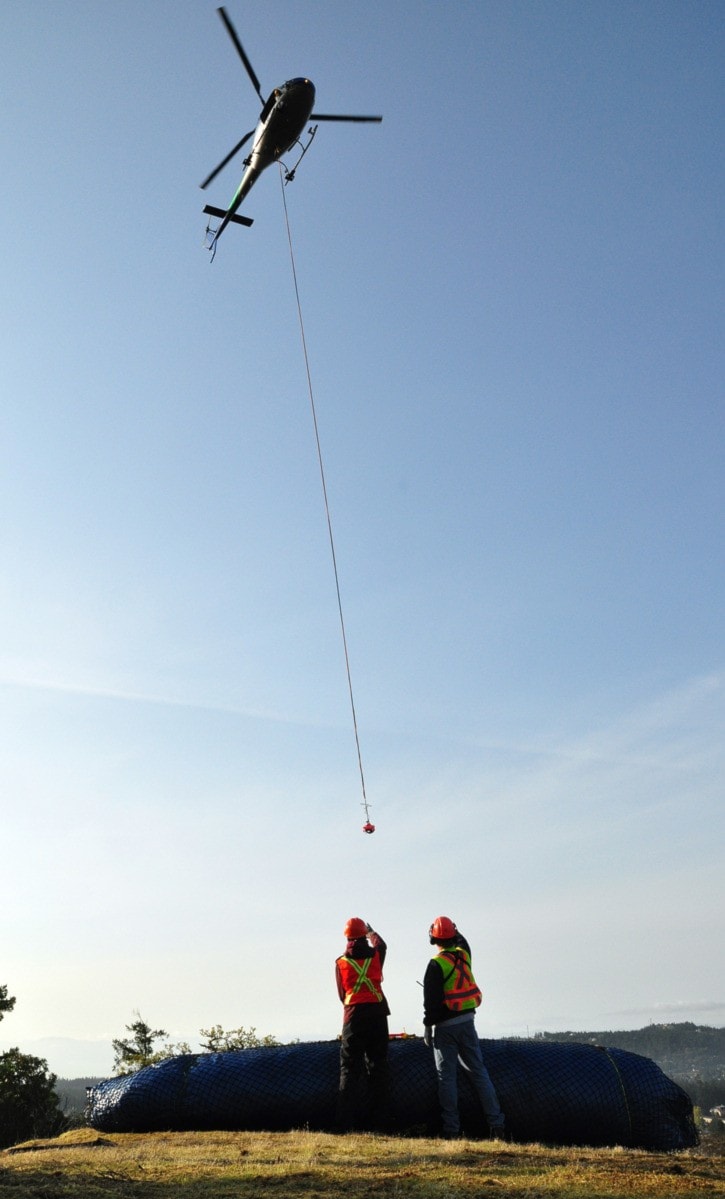In the game of broom removal, it’s two steps forward, one step back.
On Thursday, 10 bundles equating to about three tonnes of broom, was heli-lifted off Mill Hill regional park in Langford, marking the 10th year of the eradication effort.
Over the years, hundreds of tonnes of broom has been clipped, airlifted and eventually incinerated in the uphill battle to lessen the plant's choke-hold on Garry oak meadows.
“It takes along time to see results,” said Marilyn Fuchs, environmental conservation specialist with Capital Regional District Parks. “Invasive species removal is a long-term proposition. When you first take broom out, it doesn’t mean it’s gone. There’s always seeds around in the soil.”
Fuchs said reclaiming the land is slow but steady. Native plants are repopulating the soil in broom-free areas, including a dozen listed as species at risk. Ultimately, the effort is about preserving the one of the few remaining Garry Oak ecosystems on Vancouver Island.
“The significant thing about Mill Hill is the concentration of plants,” Fuchs said. “With 160 sites, its the highest concentration of rare plants in the province.”
For the past three weeks, 14 CRD parks staff and a total of 130 volunteers cut away fields of broom from the west face of Mill Hill overlooking Langford.
Removing broom is a painstaking process. Typically a staff member will feel their way down the plant stem, brush away debris and moss at the root, and clip the plant slightly below ground with as little soil disturbance as possible.
“Working from the top of the hill, it was tiny little broom. It’s like cutting grass with scissors,” said project leader Jamie Hamel. “It’s painfully slow until you get down the hill. This year they wanted all the broom gone. Even the small stuff.”
Alpine Disposal in Langford chips the broom and mixes it with wood waste for facilities which can burn biofuel, such as the Harmac pulp mill.
Fuchs said Mill Hill broom removal will continues for at least a few more years. The federal Ministry of Environment has committed about $40,000 per year for the next two years, and the CRD usually chips in $20,000 plus staff time and equipment.
The funding will allow CRD biologists to continue the Mill Hill monitoring program, which documents the species and volume of native plants returning to broom free areas.
“We are showing positive results, we are seeing more rare native plants in relation to broom removal,” Fuchs said. “We’ve also seen when broom is removed, the area becomes flush with invasive grasses, then native plants move in. It shows how complex these ecosystems are.”
editor@goldstreamgazette.com
